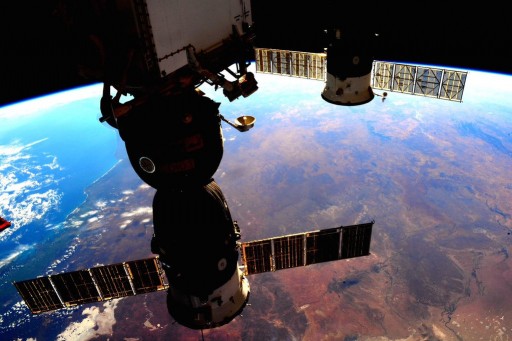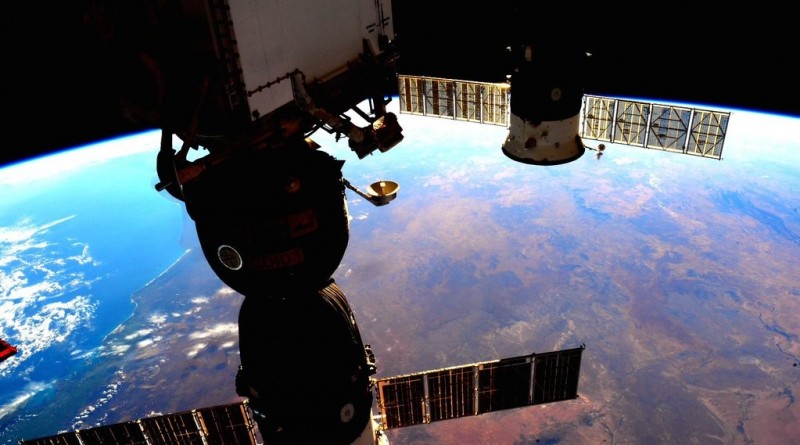ISS Operations Update – January 27, 2016

Experiments:
Burning and Suppression of Solids – Milliken (BASS-M) – Equipment Preparation in Microgravity Science Glovebox [BASS-M stands for Burning and Suppression of Solids – Milliken and is part of a series of BASS experiments that investigate how solid materials burn without the presence of gravity which is of use in physics but also in spacecraft engineering and fire protection. The BASS-M experiment looks at flame-retardant cotton fabrics to determine how well they resist burning in microgravity. This can be used in the development of flame-retardant textiles for use on Earth and in space.]
Cognition [Cognition, also known as Individualized Real-Time Neurocognitive Assessment Toolkit for Space Flight Fatigue uses a battery of tests to measure how spaceflight-related physical changes (microgravity, lack of sleep quality, diet) can affect the cognitive performance of humans during long-duration space flights. The experiment consists of ten brief computer-based tests that cover a range of cognitive functions and deliver immediate feedback on current and past results. A good neurocognitive function for effective performance during space missions makes an investigation of sleep and fatigue in space an absolute necessity. The testing operation consists of a sleep questionnaire and subjective evaluations at the beginning followed by the ten tests that focus on: sensor-motor ability, visual object learning and memory, attention and working memory, abstraction, spatial orientation, emotion recognition, abstract reasoning, complex scanning & visual tracking, risk decision making, and vigilant attention and psychomotor speed.]
Dynamic Surf experiment reconfiguration [Dynamic Surf is part of a series of experiments examining Marangoni convection that occurs in the presence of surface tension gradients produced by a temperature difference at a liquid/gas interface creating a flow of material.]
Synthetic Muscle Imaging [“Synthetic Muscle: Resistance to Radiation” paves the way for the development of space-based robots with Synthetic Muscle to give them more human-like capabilities to fulfill a number of tasks in future space missions. The electroactive polymers in the Synthetic Muscle would have to be able to withstand the harsh radiation environment in space and maintain its ability to contract and expand like real human muscles.The Synthetic Muscle, developed by Ras Labs, consists of robust electroactive polymers that contract and expand. The material can withstand extreme temperatures from –271 to over 135°C making them ideally suited for application in the harsh thermal environments found in space. Initial testing also shows promising signs of the material’s behavior in extreme radiation when combined with coating and additives.]
VEG-01 Investigation – Plant Photos. [VEGGIE or Veg-01 is a deployable plant growth unit to be set up on the Space Station to demonstrate the feasibility of a space garden. The experiment facility provides lighting and nutrient supply and is capable of supporting a variety of plant species that can be cultivated for educational outreach, fresh food and even recreation for crewmembers on long-duration missions. Thermal control is provided from ISS in-cabin systems and the carbon dioxide source is the ambient air aboard ISS.]
Maintenance/Systems:
Nominal Inspections/Servicing Tasks (Morning Inspection, Caution & Warning Panel Check, Sozh System Maintenance) (Russian Crew)
Water Mist Portable Fire Extinguisher Setup
SSIKLOPS Installation on Kibo Slide Table for CubeSat Deployment Friday [SSIKLOPS, the Space Station Integrated Kinetic Launcher for Orbital Payload Systems, is the third deployment mechanism for satellites to be released. It can be used to deploy larger satellites of different shapes up to a mass of 110 Kilograms. SSIKLOPS is a flat structure that includes grapple fixtures for the robotic arms of the Space Station and a single grapple fixture for the satellite that is to be deployed. The fixture includes clamps and springs for the deployment of the satellite. Overall, the structure is 127 by 61 by 7.6 centimeters in size.]
Payload Multiplexer/Demultiplexer (MDM) #2 Loss Of Communications due to High Rate Data Link (HRDL) card latch up. MDM #1 was transitioned to prime and communications were restored, also allowing #2 to complete a reboot and enter nominal backup mode.
Replacement of СО2 Filter Unit
Verification of ИП-1 Flow Sensor Position
Other Activities:
Orbital ATK (OA)-4 Cargo Operations
Russian EVA-42 Procedures Review
TV conference with participants of the 10th S.P. Korolev Russian National Youth Readings
Progress M-29M Liquid Waste Transfers

